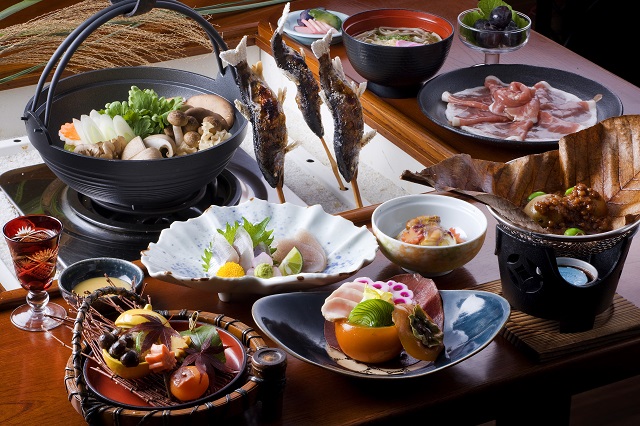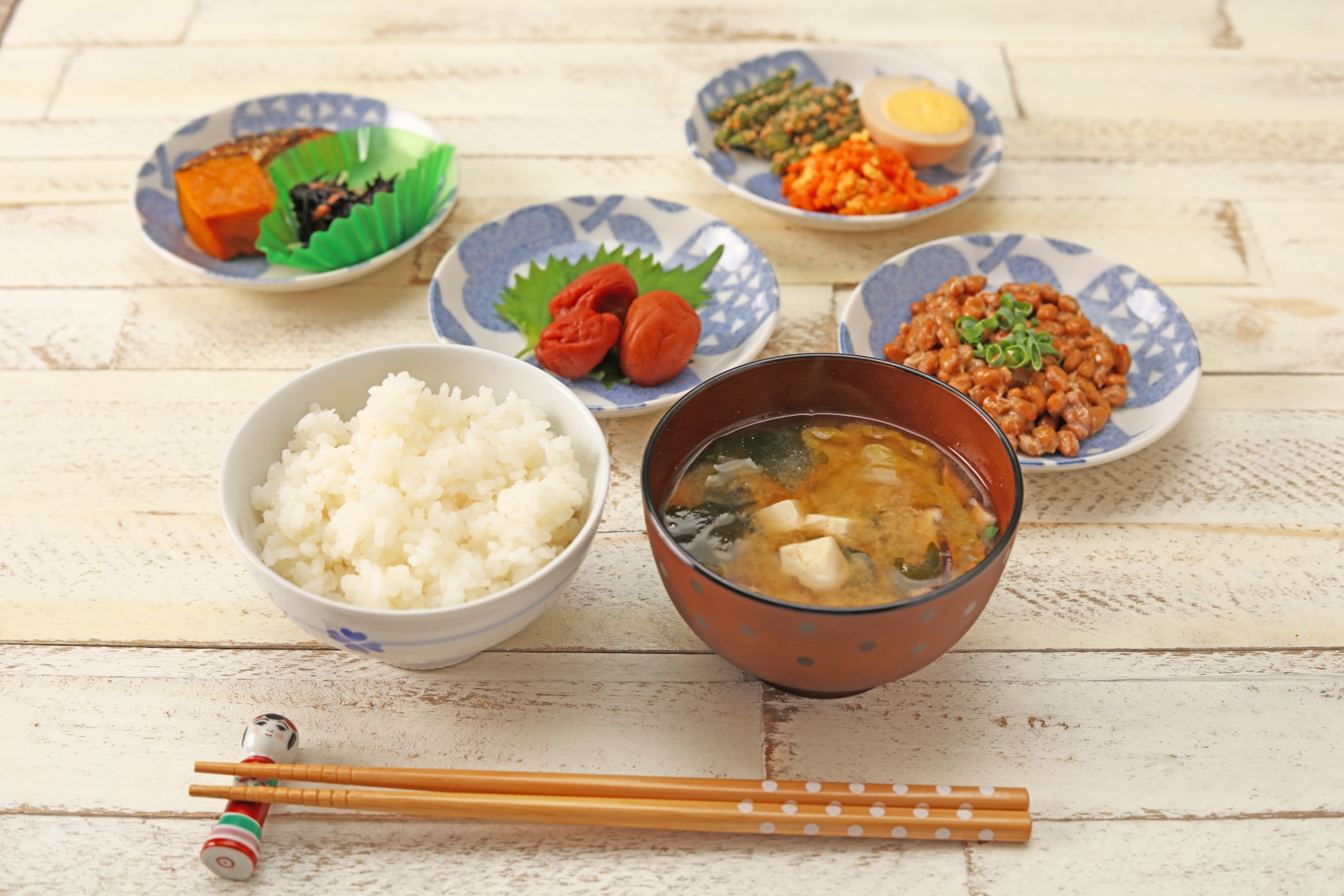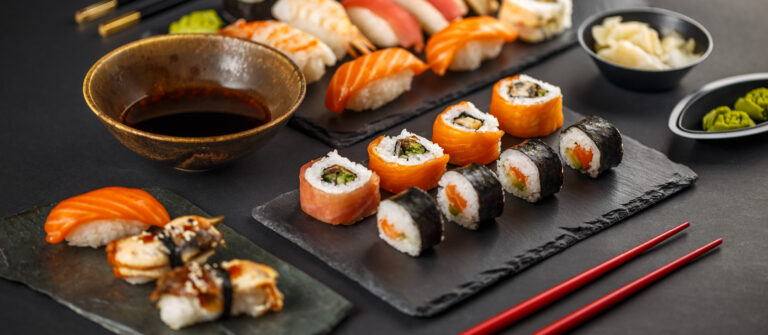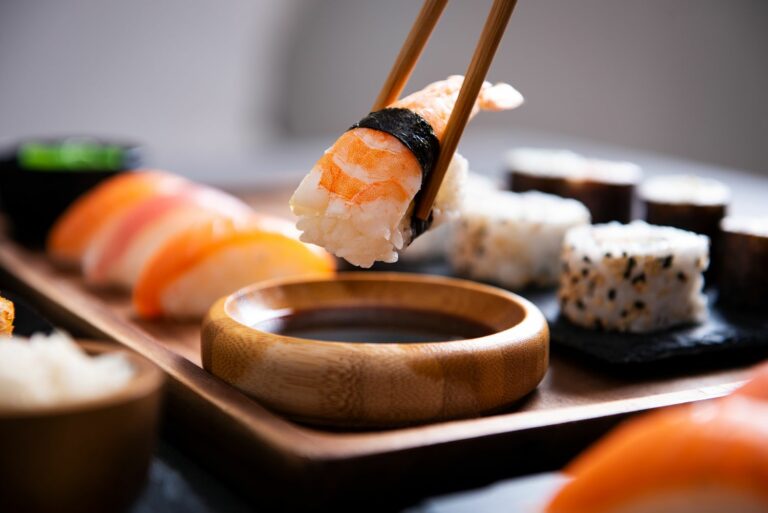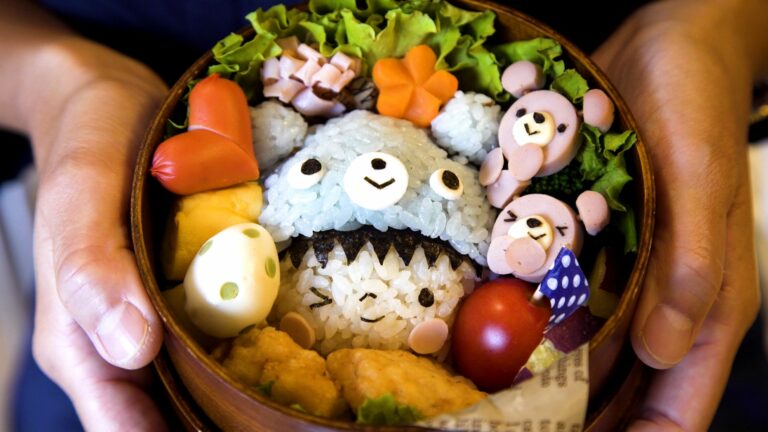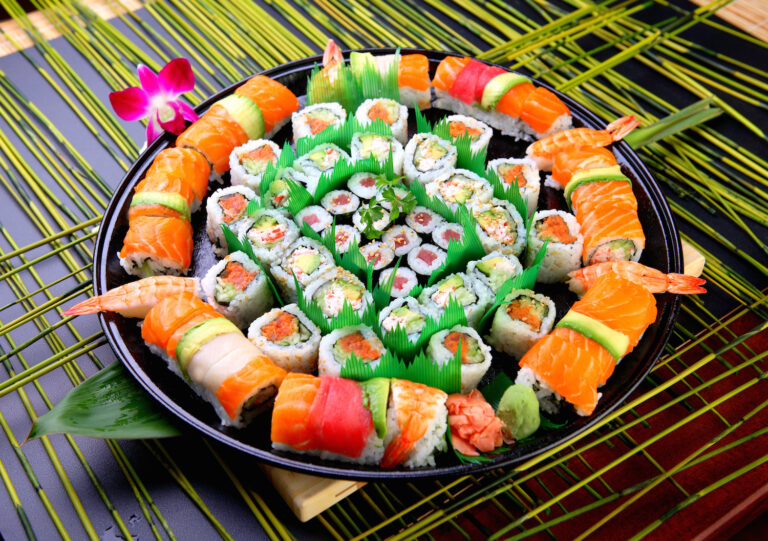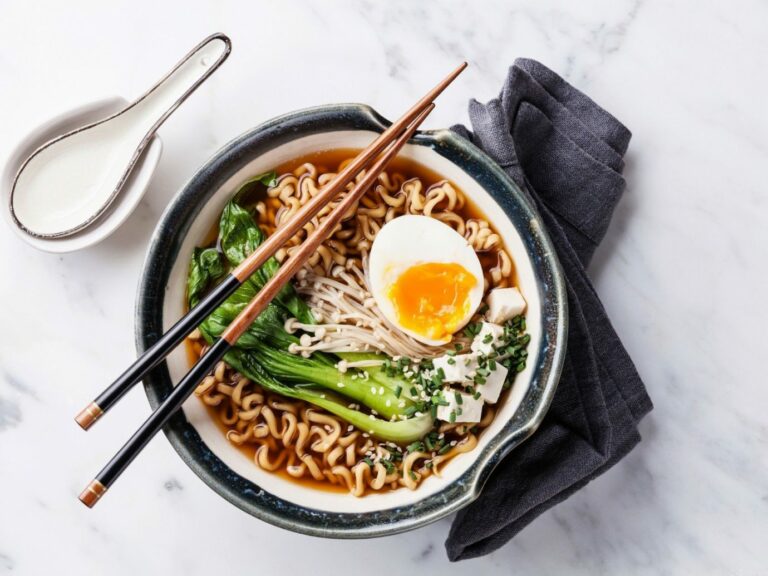There are not so many cuisines of the world classified as the World Intangible Cultural Heritage of UNESCO. The highlight of this collection is Japanese cuisine. Small plates of various shapes on the table, small pieces of food that are convenient to grab with chopsticks and send into your mouth, a clear appearance of the ingredients that make up the meal – this expresses the Japanese desire for elegance and aesthetics. Japanese attention to detail can be traced in their attitude to food: young people are served larger portions than older people due to different metabolism, food recipes in the winter season are different from summer, the design of dishes turns into real art.
Simplicity, ease of preparation, the freshness of products are the foundations of Japanese cuisine. A regular corner grocery store or a high-end restaurant in the city center will offer their customers equally fresh food. In Japan, prepackaged and offered food has a shelf life of no more than a day. It is hard to believe that the ubiquitous and well-known Japanese cuisine was once closed to the world due to the policy of national seclusion that was pursued until 1868.
History of Japanese Cuisine
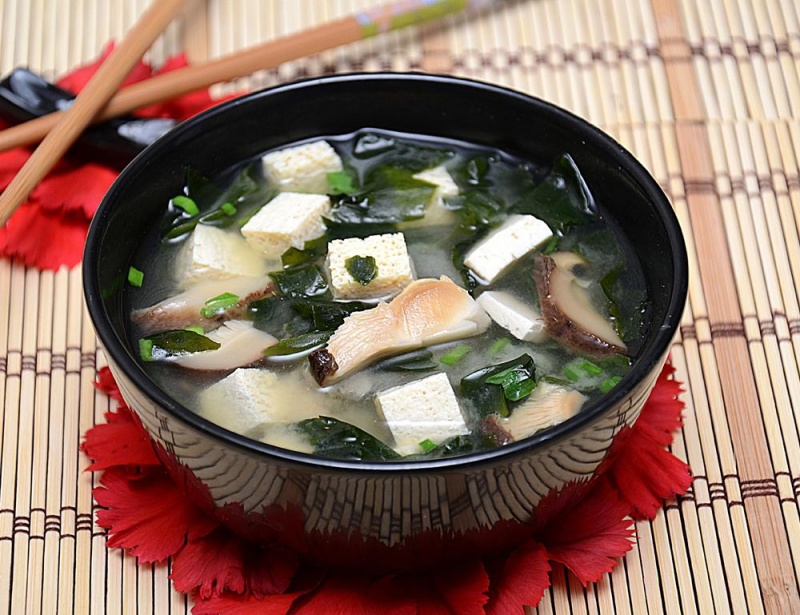
The earliest evidence of Japanese cuisine dates back to the Mesolithic and Neolithic times when the main diet of the Japanese of that time was fish, various types of millet, and shellfish. Even then, the Japanese used pots in which all kinds of stews were cooked. The famous Japanese dish shabu-shabu, which is also called “a dish from one pot”, dates from just that period. Archaeologists who carried out excavations in Japan noted that even then people used natural refrigerators in the form of deep pits and preserved food with salt.
The main product of the cuisine – rice – began to be cultivated in Japan in the 3rd century BC. BC and rice was not only a food product but also a monetary unit, a measure of remuneration for samurai until the end of the 19th century. Rice stocks spoke about the material wealth of the family. In the 6th century, China influenced Japanese cuisine, and the foundations of the tea ceremony were laid.
During the same period, Buddhism penetrated the country, and therefore, already in 675, a law appeared prohibiting the use of meat. Violation of the ban was punishable by death. True, the ban itself did not apply to all types of meat. For example, the meat of wild pigs and deer could continue to be eaten with impunity. Fishing was also banned in 752. The fishermen were left without a job and a source of food. But to prevent the fishermen from starving to death, the imperial house dated them with a certain amount of rice annually. Chopsticks are not a Japanese invention. The Japanese borrowed them from the Chinese, just like the recipe for soy sauce and udon noodles.
“Rice was not only a food product but also a currency”
With the beginning of the aristocratic era, which began in 710 after the founding of the permanent capital in Nara, Japanese cuisine takes on its inherent features. The dishes at the imperial court are elegant and understated, the finesse and external aesthetics of the dishes are appreciated, not their abundance. Everything on the plates acquires a certain symbolism, the color of the dishes is determined by the season and the events taking place.
Until the arrival of the first Portuguese in Japan in 1543, sweets, as such, were absent from the diet of the population. Although sugar was discovered by the Japanese in the 8th century, it was considered a cure for lung disease and was not eaten. Most often, fruits, chestnuts, honey were sweet for tea. Everything changed with the arrival of Europeans in Japan. Sweet candies, caramel, cookies, and lollipops – “sweets of the southern barbarians”, which tried to persuade the Japanese to Christianity. Japan closes itself off from the world again in 1639 and opens to the West only after 1868. Bakeries, steak houses, breweries, ice cream, and chocolate shops, coffee shops, and liquor stalls have all come to Japan and have become cosmically popular among young foodies and intellectuals. Cheeses, milk, and butter did not emerge from the popularity of the cheesecake dessert until the 1970s.
But American hamburgers were not destined to flood the market. Back in 1958, Ando Momofuku invented the revolutionary instant noodles in plastic cups that the whole of Japan fell in love with, and not only it. Japanese food traditions are losing their relevance in their own country, but suddenly the Japanese discover that it is their cuisine that inspires the entire modern world. People from all over the world flocked to an internship with Japanese chefs. After all, the line in your resume that you were trained by a Japanese chef increases your competitiveness.
Japanese Food

Eating outside the home gained its popularity in the Edo period in the early 18th century, when the city (which will be renamed Tokyo in the future) was twice the population of the then Paris and the bulk of the inhabitants were unmarried men and visiting provincials. Many of them huddled in small rooms and there was simply nowhere to cook. This gave a powerful boost to the fast-food industry. In 1751, the world’s first restaurant opened in Edo. The ability to understand the quality of food has become a matter of honor. Edo, Osaka, and Kyoto began printing the first restaurant appraisal booklets.
In modern Japan, the main feature of catering that distinguishes it from the rest of the world is the tradition of displaying display cases at the entrance with dummies of main dishes and their prices. Green tea will be served with food, and a tip will be considered an insult – it is not customary to leave it here. You can often see a picture of a Japanese waiter catching up on the street to a European in order to tip him, which he left out of habit.
“You can often see a picture of a Japanese waiter catching up on the street to a European in order to give him a tip, which he left out of habit.”
All active life in big cities takes place around metro stations and train stations, so most cafes and restaurants are concentrated there. Food prices can be either quite reasonable or obscenely high. It all depends on the level of the restaurant, the range of dishes and the quality of service.
An inexpensive and tasty option for a tourist to have a snack will be sushi establishments, organized on the principle of a conveyor belt, where small plates pass you and you can take whatever you like right from the belt. The cost of meals is determined by the color of the plate. After the end of the meal, the waiter counts the number and color of the plates, fixes them in the check, which you pay at the checkout when you leave the establishment. The order is usually made using an electronic display installed near each table.
It happens that a cafe offers only options for complex meals and it is impossible to change anything in the stated combinations. For example, if you want a bowl of soup with meat and vegetables, but without a bowl of rice, do not even hope that they will understand you and fulfill your wish or adjust the price. There is a menu and that’s it, no other items are provided.
Superstitions & Habits
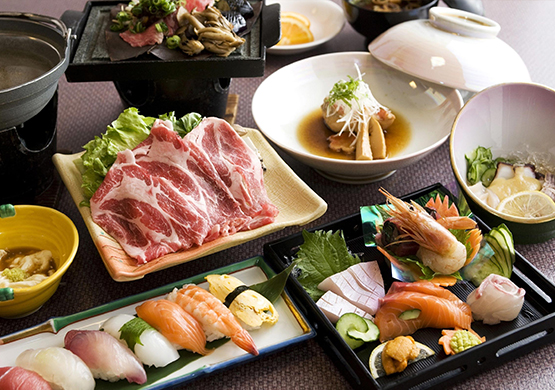
There are a number of rules associated with chopsticks in Japan. For example, women can only eat food with chopsticks, while it is acceptable for men to eat some food with their hands. Sticks should not be inserted vertically into food, especially rice, this is done only at funerals. Chopsticks do not move plates, do not point, do not clamp them in a fist, and do not place them across the bowl. The chopsticks should be placed on the table before asking for additional rice.
Before a meal, always say “Bon appetit” and a damp warm, and sometimes hot oshibori towel to rub your hands before eating. Getting up from the table with half-eaten rice in a bowl is impolite, they eat rice to the last grain.
Dishes
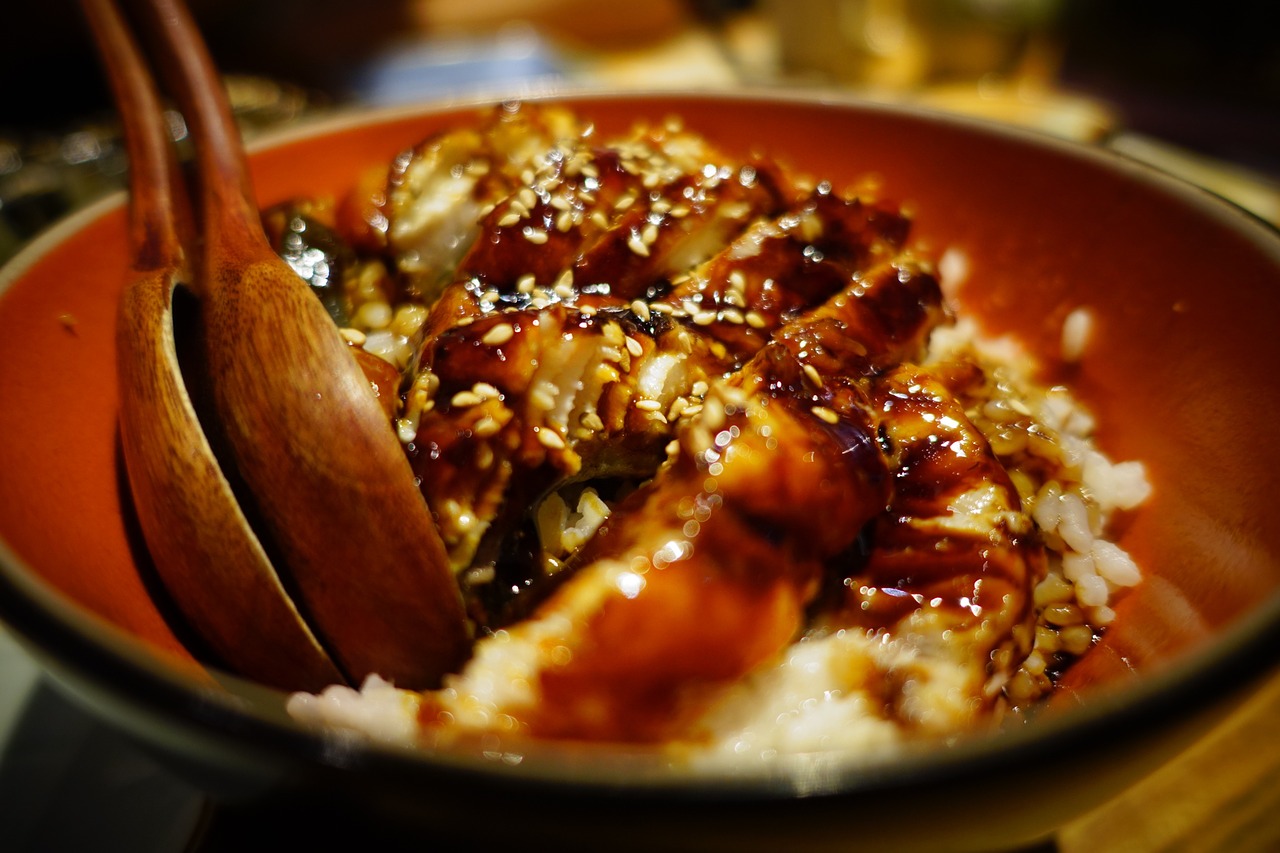
Japanese cuisine can be roughly divided into three groups: rice dishes, noodle dishes, and fish and meat dishes. The degree of heat treatment varies from completely raw meat and fish to products fried in batter over high heat.
There are three types of Japanese noodles: ramen, udon, and soba.
Ramen was brought to Japan from China. Basically, they are noodles in the broth. Most often, in chicken, but also in pork or seafood broth. Vegetarian ramen is also gaining popularity in recent years. Ramen noodles are made from wheat flour and eggs.
Udon noodles are made from wheat flour but without the addition of eggs. Due to its composition, it takes a little longer to cook than ramen noodles, but it is also more nutritious. Unlike ramen, udon noodles are consumed both as an independent dish with soy sauce and as part of a soup.
Soba is made from buckwheat flour, sometimes with the addition of wheat. It is a famous dish since the Nara era when it was served at tea ceremonies. Soba is usually eaten cold with seasonings and soy sauce but sometimes added to the hot broth.
Eating noodles of any kind, it is customary in Japan to smack their lips, thus showing that the dish is delicious.
Tempura – Shrimp, fish, and seasonal vegetables fried in batter. It is consumed with soy sauce broth. This crispy dish was brought to Japan by Christian missionaries.
Sukiyaki – “dish from the cauldron”, like shabu-shabu, is cooked in a saucepan right on the table. Thin slices of beef, noodles, tofu, and vegetables. Nothing complicated, but the taste is very exquisite.
Syabu-shabu – the principle of cooking is close to sukiyaki, although here a thin piece of meat is dipped into a pot of boiling water, due to which excess fat is removed from the meat and the calorie content of the dish is reduced. The broth with meat is traditionally seasoned with onions, cabbage, and vegetables.
Sushi, known and loved by everyone, initially looked quite different. Previously, rice and fish were carefully marinated and left for at least a year, and more often for three, before eating. The modern look of sushi was given by samurai who appreciated the taste of raw fresh fish. It was thanks to their taste preferences that sushi became a bun of rice and a piece of fish. As a rule, sushi is dipped in soy sauce and seasoned with “Japanese horseradish” wasabi. We are used to seeing wasabi on the table in a separate bowl, but in Japan, wasabi is put right inside the sushi. It is believed that different types of sushi should be eaten with pickled ginger in order to fully experience different tastes.
Sashimi is a sliced fillet of raw fish of various types, which is eaten dipped in soy sauce. Often sashimi is served with daikon – a Japanese radish that helps to fully reveal the taste of fish.
Japanese curry is the only rice dish eaten with spoons. The dish came to Japan from India and was positioned as English (at that time India was a British colony). Later, the Japanese transformed the curry sauce to suit their taste, and now this dish cannot be called a fusion version of the Indian, the taste of the sauce is completely different.
Yakitori is Japan’s favorite alcoholic snack. Chicken meat, vegetables and mushrooms on bamboo skewers, grilled with coals. Mini barbecues are offered at numerous izakaya pubs.
Tonkatsu is a super popular dish in Japanese cafes. Just like tempura, it is deep-fried, but it is a pork chop and is served not with soy, but with another, slightly sweetish in taste, sauce.
It is impossible to ignore the delicacy – pufferfish, which is considered food for extreme lovers. After all, only a drop of poison, contained mainly in the liver of a fish, can lead a gourmet to complete paralysis and death. All the chefs who prepare pufferfish have a special license to prepare it. According to the Japanese tradition, the chef who has poisoned the client is obliged to make himself hara-kiri, however, is this still relevant today? That is the question.
The second famous Japanese delicacy is marbled meat. The meat of the bulls turns out to be especially tender and soft due to the fact that they are almost never let out of the stall and are generously watered with beer.
And of course, wagashi – all kinds of Japanese desserts based on rice, legumes, agar-agar. It is difficult to call them sweet in the usual sense, but having got used to and have discovered the taste of wagashi for yourself, it is already difficult to refuse them.
Alcohol
The technology of making the most famous alcoholic drink – sake – is similar to brewing beer, but the amount of alcohol in Japanese vodka sake is three times higher than the “degree” of beer. Sake is also called rice wine because of the rice and water in it. Sake is drunk warm – to achieve a quick intoxication, or chilled, which is more familiar to Europeans. Sake is considered a drink for the smart, as research by Tokyo scientists suggests that the IQ of those who drink it daily is higher than that of those who abstain from it.
No less popular alcohol in Japan is beer, which is usually adorned with pretty, smiling Japanese women in short skirts. The whiskey that came from outside also won favor. Low alcohol fruit drinks are popular with young people. Fruit and berry wines, which we contemptuously call “ink”, are made in Japan from plums – unlike ours, they have their own sophisticated interesting taste.
Fast Food
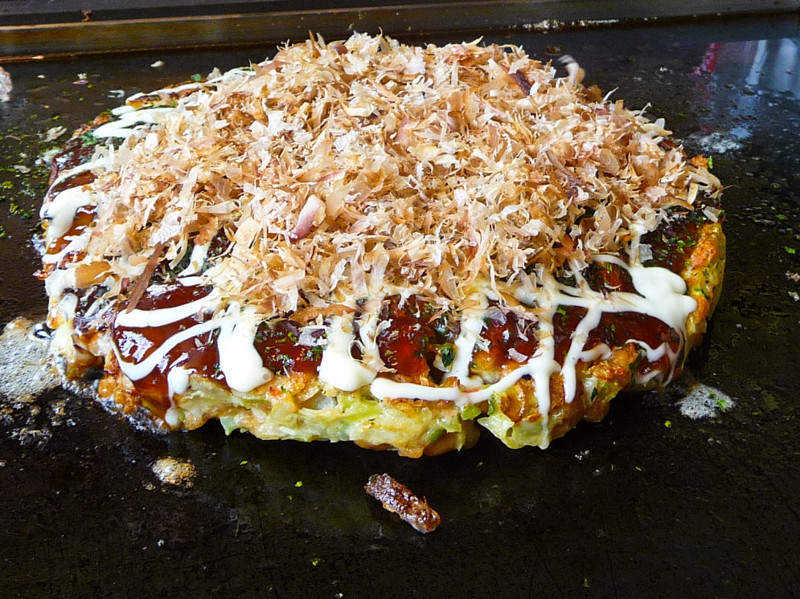
The most popular Japanese snack is bought onigiri. This is a triangular-shaped rice cake with a filling (salmon, chicken, caviar, egg, vegetables, and so on). Once peasants took onigiri with them to the field, but now children take them with them to school and for a walk.
Okonomiyaki – “Japanese pizza”. Only her base is not made from dough, but from chopped cabbage, fastened with raw eggs. In the form of a filling, noodles, seafood, vegetables are used. Fast and economical meal, complemented by the sweet sauce and sprinkled with dried fish.
Takoyaki is small balls of flour with pieces of octopus meat inside. The sauce and dried fish are the same as in okonomiyaki. Usually, takoyaki is sold in 6 or 9 pieces. It seems that this snack can only “freeze the worm”, but despite its size, takoyaki is a very satisfying meal.
Bento is a variant of a camping lunch. It is a box divided into sections, each of which contains different ingredients. Bento was originally sold at train station stations for travelers with a long journey ahead of them. The basis of bento is rice and various mini-dishes (meat, fish, vegetables). Previously, caring wives and mothers were engaged in their preparation, now they can be bought in any supermarket. However, it will not work to take out a wooden bento box from Japan as a souvenir. They are considered national treasures and are prohibited for export.
In addition, Japanese street food includes fried squid, popcorn, crepe-type pancakes, fried chestnuts, steamed buns with nikuman meat filling, chicken on a stick kushiyaki, kebabs made from various meats, and quirky forms of tofu. You definitely won’t stay hungry in Japan!











